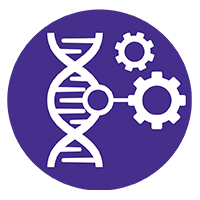Back
Advances in Therapeutic Development Across Modalities
Session: Rapid Fire: Innovation Based on Traditional Approaches
Comparing Three Distinct Radioiodination Methods for in vivo Biodistribution
Wednesday, April 26, 2023
2:00 PM – 2:15 PM ET
Location: Salon D, 5th Floor

Alecia T. Dent, PhD (she/her/hers)
Scientist
Genentech, Inc.
South San Francisco, California, United States
Rapid Fire Speaker(s)
Biodistribution of large molecule therapeutics is often characterized in preclinical models using radionuclides. One of the most common methods to radiolabel is indirect iodination of tyrosine however, the resulting iodotyrosine (IT) is susceptible to dehalogenation. Additional prosthetic groups have been developed to circumvent this like Bolton-Hunter (BH) and N-succinimidyl 3-[125I]iodobenzoate (SIB) however they have never been directly compared to IT systemically. We used a dual isotope approach to evaluate the impact of iodination of a HER2 targeting antibody in KPL4 tumors. A direct comparison of IT, BH and SIB iodinated antibodies showed comparable tumor distribution and catabolism but marked differences in thyroid accumulation. Of the iodination methods evaluated only IT showed consistent enrichment of I-125 in the thyroid. Overall, SIB and BH methods were more resistant to dehalogenation but the value gained over IT labeling depends on the context of the study and tissue of interest.
Learning Objectives:
- Upon completion, participant will be able to define the susceptibility of radioiodinated antibodies to in vivo dehalogenation.
- Upon completion, participant will be able to determine how in vivo dehalogenation impacts the interpretation of radiolabeled antibody exposure.
- Upon completion, participant will be able to determine how in vivo dehalogenation impacts antibody biodistribution in a pre-clinical tumor bearing model.

